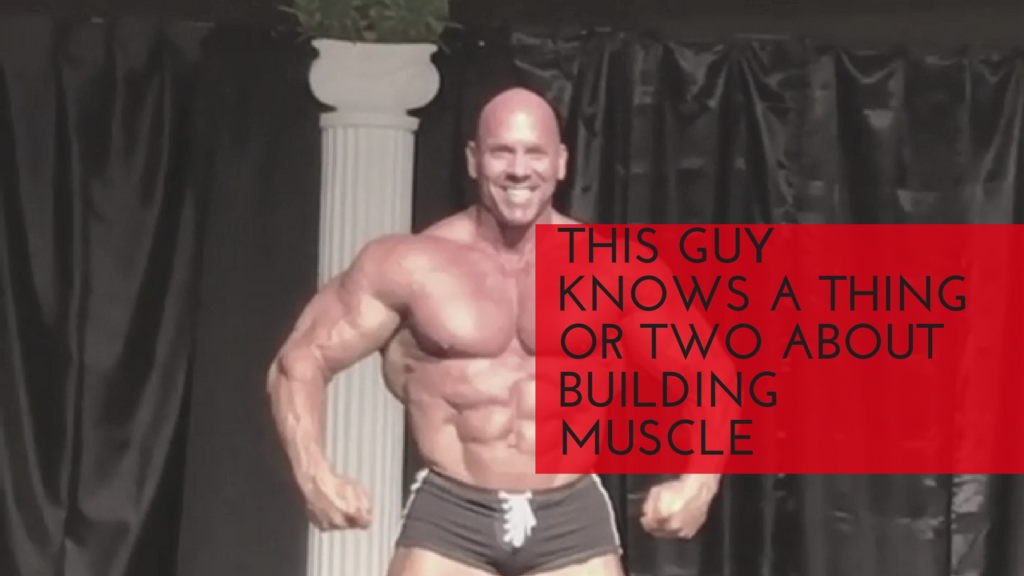I first met Stan “The Rhino” Efferding at The Arnold Schwarzenegger Fitness Expo in 2013. He struck me immediately as someone who loves to give of their time to help others. So when I found out that Stan has a garage gym in addition to the Iron Addicts Gym, he owns in Las Vegas, I knew I wanted to pick his brain and share the results with you guys. We met again at the 2018 Arnold, exchanged information and a few weeks later, we were having an hour long, information packed phone conversation. Here’s what I learned from Stan:
Stan, thanks for allowing this interview. I know you are a busy guy.
No problem.
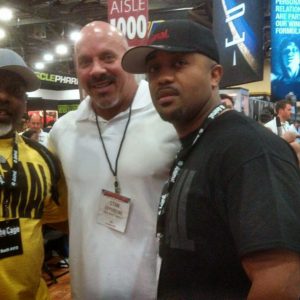
You are actually the second person who’s successfully went on Shark Tank that I’ve interviewed. The first was a company called PRX Performance. I don’t know if you are familiar with them or not.
No, that’s great.
Yeah, essentially they make a fold away … they have a patent for the first fold away style rack for your garage. So you can fold it away, they’re in Iowa where that it’s cold most of the time, so they can’t park in the driveway. So they fold the rack away and you can pull the car into the garage when you’re not training.
Yeah, I’m sure that’s great.
The question I have though is, what were your criteria when you were selecting equipment for your home gym versus for the commercial gym you own? Because you’re in a fairly warm area, but what were so the cold isn’t an issue so what influenced your purchases?
It was pretty similar. It’s equipment that I like to train with. A competition bench press, a squat rack. For me, I wanted it to have some band pegs and a chin up bar and just kind of a multi-function use. A place to put my weights and so I got some nice stuff. I got a great squat rack from Elite. As a matter of fact, I think my bench is from Elite as well. Between Elite and Rogue, obviously that’s a premium in terms of cost, but the quality of the equipment is so good. It’s a commercial equipment, so I’m not compromised by something that’s rinky dink and might break.
Right. Especially not with the weights. I mean, you’re not lifting as heavy as you used to, but you’re still looking with an eye towards your ability, I’m assuming. Then, too, you’ve got your kids out there, so they’re growing up kind of realizing that strength, health, and fitness are a normal way to be. So you could potentially pass it on to them.
Yeah, they already use the equipment and you’re right, but leading by example they think that’s normal. They take ten minute walks with me, they eat the food we eat. You know, a snack is fruit; and the equipment that we’re using every day to exercise, they’re doing it, too. They are doing push ups, they’re doing squats, even if it’s just air squats; and they are playing with the cable machine; so it’s going to be second nature for them. I’m excited about it. Leading by example.
Now, you’ve always been, let’s say, protective of your neutral status when it comes to supplements. You are not sponsored by anyone. Do you get offers from the equipment companies to test out pieces for free if you give them a review or whatever?
Yeah, I’ve gotten quite a few different offers over the years. The problem is, is that I’ve been successful enough such that I’m pretty greedy when it comes to my time and what my perceived value of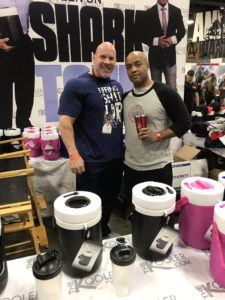 my time and my reputation. So, I’ve kind of priced myself out of the current market that the sponsors don’t spend money like they used to because there’s a thousand people in line behind you that are happy to do it for less or for free for some posts on some social media.
my time and my reputation. So, I’ve kind of priced myself out of the current market that the sponsors don’t spend money like they used to because there’s a thousand people in line behind you that are happy to do it for less or for free for some posts on some social media.
And, also, sponsors are looking for people that already have a good market. People who have a large social media presence. Whereas before, they used to sponsor names and faces that were successful in the industry, in terms of the sport. Now they’re putting their efforts towards people who have created a business model and have lots of followers. They find that to be more profitable for them. Gets them quickly exposed to that athlete’s market base.
Okay. So one more thing about your kids; you said … or you just even brought it up, that your garage even allows you to spend time with your kids that they go with you on a ten minute walks. How else is having a home gym beneficial to you? Especially from the perspective of someone who owns a commercial gym where you could go train? Why is it valuable for you to have a gym at home?
Well it saves time, first and foremost. In many cases, just driving back and forth from the gym takes longer than the workout itself, for some people. Then having, of course, if it’s busy to not be able to use the equipment you want to use.
I believe in a lot of movement frequently throughout the day with shorter duration. I don’t spend two hours training. I might train for 40 minutes or 30 minutes. I don’t take 40 minute treadmill walks. I’ll do my ten minute walks because I think the research suggests that it’s even more beneficial, health wise, and for performance.
I’ve tried to create a workout program that allows me to have more free time and gives me a bigger return on my investment. It allows me to train more frequently, which I think is optimal. You can train long or you can train hard, but you can’t do both; and I prefer to train hard in a shorter period of time.
So you are a believer in NEPA? Non exercise physical activity? Do you have like the stand-up desk and all that kind of thing?
Absolutely, I do. Yeah. That’s why the ten minute walks are so important because the frequency in which you do them. There was a study done, I think it was out of Japan where they put pedometers on a group of people that walked. Had them walk 10,000 steps a day. Then they had another group of people that just did the three, ten minute walks. They only walked 4,000 steps a day, but they walked with a little more intensity. They swung their arms a little harder, they got their heart rate up a little higher. As you might suspect, the group that only did 4,000 steps, but did the more frequent walks, the three 10 minute walks, with a little higher intensity, had a significantly improved health outcome and body composition changed as compared to those people who just logged 10,000 steps, but with no real specific intensity or frequency.
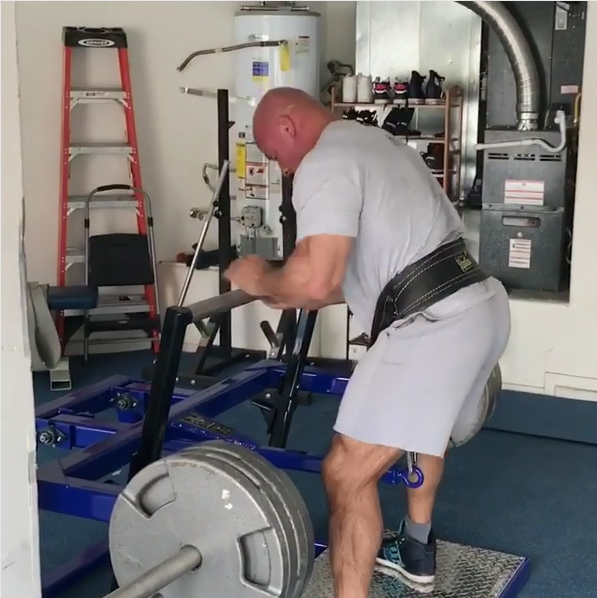 Since you mentioned that study, you are a big believer in staying up to date on current research. Do you also go back and look at some of the old physical culture material? The stuff that was done back when we were just more active as a people in general? Or, I guess, when I say we, people in America, were more active in general? Do you ever go look at that?
Since you mentioned that study, you are a big believer in staying up to date on current research. Do you also go back and look at some of the old physical culture material? The stuff that was done back when we were just more active as a people in general? Or, I guess, when I say we, people in America, were more active in general? Do you ever go look at that?
Well, yes, I mean, in the 80s when I was in college, I used to sit up in the Science Library until midnight scrolling through microfiche studying, researching, and trying to find things that worked best for me.
I think the research has followed what works. I don’t necessarily think it’s defined it for us, because I remember back in the early 90s what worked then, still works now. The guys that were the most successful, that trained Gold’s Gym in Venice; I used to go down there and talk to them and walk around and watch them train as often as I could. All of them trained twice a day. They ate eight times a day. They slept nine plus hours a day, between sleeping at night and naps during the day.
That kind of intensity and commitment and discipline and consistency still works the best today. The research just seems to confirm that, even though we didn’t have as much research back then. Now, we’ve got an extraordinary amount of research from very qualified people with not only an interest in sports themselves, but also has credentials to match in terms of PHDs, et cetera. So, we are finding that it reiterates or it certainly supports the fact that what the most successfully people did in the 90s, they did just because it worked. Not necessarily because they had a study that told them to do it.
That’s pretty huge, because I am … now don’t scold me, but I work at night and one of the things I found is, if I get home, it doesn’t matter if I workout when I first wake up or if I workout when I get home. If I spend two hours in the gym, or an hour and half in the gym … even though the gym is right down stairs, I have a problem getting to sleep. So I actually was forced to implement a two a day approach. I took my workout, cut out the fluff, and then I divided what I had left in half.
So, I do half of it when I come home, just about 30 maybe 45 minutes, then I do the other half when I wake up. That seems to be more of the bodybuilding style stuff that gets your heart rate up and everything else. The reason I bring that up, is because when people hear two a days, they picture two, two hour long sessions a day. That’s not what you are talking about. You mean short, brief, intense.
Exactly, you take what you normally would do, and you cut it in half. You do it in two splits. I actually like to put a little more intensity into the first workout and maybe do a smaller body part in the second. Sometimes I’ll work the same body part morning and nights because I only do the same number of sets I would have done anyhow in one longer workout because I get more intensity, I have less cortisol, less adrenaline, less … like you said, you recover faster so you are not losing sleep. For me, it’s really about the stimulus and my ability to recover from that stimulus. And the harder and longer you train, the deeper a hole you dig. It is more difficult to recover from. I’m a big fan of the frequency over volume.
Okay. Now, that’s a pretty good segue into the body fat question because you’ve been on both sides of the spectrum. You’ve both had to put on a lot of weight, because you started out at 135 pounds, I think you said.
Yep.
Then, when you stopped being a competitive athlete, you wanted to lose weight so that you could be a little healthier and take some pressure off your joints. So, let’s say somebody’s going for … they’re just starting out and they are going for either thing. Do you think that the power builder approach is a good way to just get general fitness?
Oh, yeah. I believe lifting heavy is always recommended. Even for women, because I think it has such a great metabolic effect. Increases your metabolism, the muscle tissue breakdown, the calories that you have to burn to recover from that, it’s much better than, as we know, a steady state cardio session. You stop burning the extra calories as soon as you are done whereas, with weight lifting, you are going to continue to have to repair that muscle tissue; so your metabolism is elevated for an extended period of time.
That’s true with EPOC as well for the high intensity kind of training. The excess post-exercise oxygen consumption. That’s a critical tool that I use when I’m trying to get harder. That’s why I implement the 20s, actually do those mostly when I am doing bodybuilding prep as opposed to powerlifting prep, because it drastically increases the number of calories that I burn. Not only while I’m training, but for many hours afterwards.
For me, the weight training is paramount. The ten minute walks really aren’t about calorie consumption. They’re about improving digestion and stimulating insulin sensitivity so that I utilize my glycogen and proteins better.
Okay. Now assuming somebody spent most of the year with that kind of style programming, about how far out would you recommend they begin meet prep for power lift?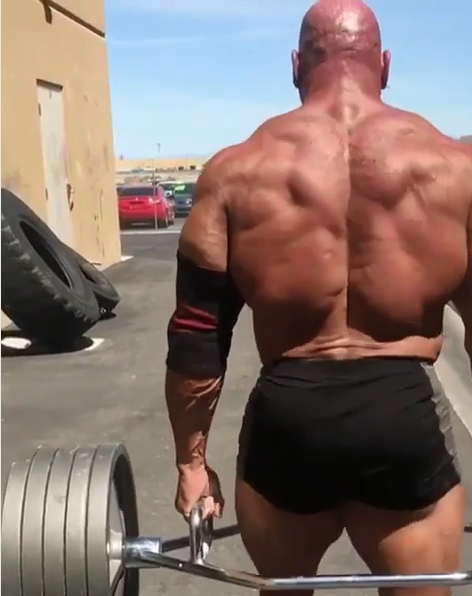
I think right around eight to ten weeks. It really depends on the individual. I follow Eddie Coan protocol and went out and trained with him a decade ago. I’ve been a follower ever since, his methods, read his book: The Man, The Myth, The Method. Eddie did linear progressions with de-loads, so he might spend three or four weeks lifting progressively heavier each week. Maybe 50 percent, 60 percent, 70 percent, then he’d take a de-load week at 50 percent, so his body can recover. Then he’ll start over with another linear progression, but he’ll start a little heavier than the first one and finish a little heavier than the first one. He may de-load and do a third progression before a meet.
That would be about an 11 week prep. Maybe 12 weeks if you include the de-load before the actual competition. I’ve shortened that into a seven week prep when I’ve had to. Done two linear progressions with one de-load week in between them, then one rest week before the meet. That’s what I did with Mark Bell in 2009. When I set that world record raw.
For me it’s a matter of everything, for me is about progressions. It’s about gradually adding weight each week, decreasing total volume … like when I’m body building I’m doing a lot for sets, I’m taking shorter rests periods when I’m power lifting; I’m decreasing the number of sets, I’m increasing the rest time, and I’m also decreasing accessory work. If I’m doing a big bench day, there’s really no sense in me going over and doing 20 reps cable tricep push downs. It send the wrong signal when I’m specializing for strength.
So I focus mostly on the core lifts, and I do less and less accessory work and volume and I rest longer and longer. I train less frequently. I might do legs twice a week when I’m body building with lower loads and higher repetitions; but with power lifting, at most, I would do legs once a week. My plan, historically, has really been to do legs one week and dead lifts the next. I think that they have a similar impact on the body and work a lot of the same structures: the hips, the lower back, the glutes. So, I would alternate. When I got closer and closer to meet I might only squat twice a month and deadlift twice a month, alternating the two. That’s how I was able to reach my peak strength.
Nick Nilsson, when I was talking to him, they call him the mad scientist of muscle. He said, if you trained yourself so that your muscles are balanced, the way I have always assumed a bodybuilder, a top level bodybuilder would, because you are going to be judged from every angle, then you actually don’t need to stretch. Because you are balanced. When you got injured, I believe it was when you had switched to powerlifting style training, even the most recent injury when you were trying to hit a 500lb squat when you turned 50. Do you think that’s a case of just creating imbalances by the very nature of specializing on just three lifts?
Yes, and again, back to Eddie Coan, he used to spend … he only competed twice a year, as did I. Throughout my career I was bodybuilding and powerlifting, so I would alternate back and forth. The power lifting does start to create imbalances. It does start to close in around the movements that you’re doing. You think of a boxer and how they generally have their shoulders drawn forwards because they don’t do much back work. Powerlifters experience the same thing in terms of their hips and their hip flexibility, they lose a lot of that mobility.
I don’t like to use the word flexibility, necessarily, because I’m not a big stretching fan. I like dynamic or active stretching as opposed to static stretching.
Just moving through the full range of motion becomes important. That’s what bodybuilding does. It allows you to use exercises from all the angles and now you are using antagonistic muscle groups. When you do that, you’re stretching the opposite muscle.
Antagonistic muscle, so when you are flexing one, you are stretching the other. So just in light of that, just bodybuilders using exercises from every angle and from opposing directions, they are stretching, essentially. Creating a balanced physique.
Back to Eddie Coan, he would do the hypertrophy training in between power lifting meets and would do even unilateral movements. One legged leg presses, which of course would provide balance to the body so he wasn’t becoming too imbalanced from squatting and having a stronger leg. Most people do have a stronger side.
But, I think that’s what’s important. I think that you have to do both. If you are going to power lift, then you need to spend some time doing hypertrophy training.
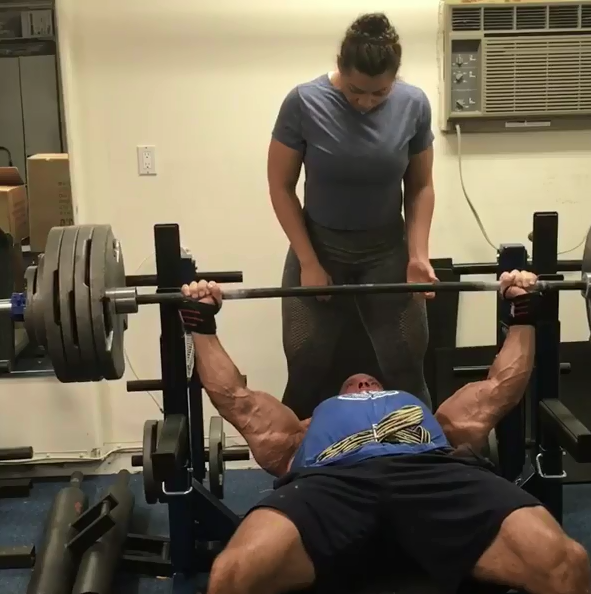 Okay. So, now, let me did a little bit deeper into that, because, the problem is that in our society, western culture, not only do we have whatever sports you are into … let’s say you are a powerlifter, but you work in an office, so that means you are going to spend a lot of your time also in that hunched forward posture typing. You probably drove to your office, so now you are actually stretching the whole time you drive, you just don’t realize it. You are turning off your glutes and stretching out your hamstrings and your lower back. Then you also have, assuming you have a cell phone, so you are going to have that hunched over caveman posture for that. So, do you think that products like the Bowtie or even just static stretching of those muscle groups that tend to get tight just from life … do you think that’s a good way to get back to the range of motion you were supposed to have? Then you maintain it with bodybuilding training?
Okay. So, now, let me did a little bit deeper into that, because, the problem is that in our society, western culture, not only do we have whatever sports you are into … let’s say you are a powerlifter, but you work in an office, so that means you are going to spend a lot of your time also in that hunched forward posture typing. You probably drove to your office, so now you are actually stretching the whole time you drive, you just don’t realize it. You are turning off your glutes and stretching out your hamstrings and your lower back. Then you also have, assuming you have a cell phone, so you are going to have that hunched over caveman posture for that. So, do you think that products like the Bowtie or even just static stretching of those muscle groups that tend to get tight just from life … do you think that’s a good way to get back to the range of motion you were supposed to have? Then you maintain it with bodybuilding training?
I’m still a fan of the dynamic movement of the mobility; so rather than holding a movement for an extended period of time, such as maybe a hamstring, putting a leg up and leaning over the toe, I would swing that leg. Because I like extra blood flow; and I also like repetition. Stretching is usually superficial and temporary, you tighten right back up. I would rather three times a day do leg swings and I just went over this, implemented this with Hafthor and Brian Shaw, swinging the leg. You want to do that a few times a day. Again, the ten minute walk, the same kind of theory. The more frequently you do these things, the more normal they become in your body starts to allow itself to remain loose.
A lot of tightness is in the mind. It’s your mind resisting the movement. If you were to be put out for a procedure and gassed, like if you go to the dentist or something and they use gas on you to knock you out for a procedure, you’d be very very flexible, because your mind is no longer involved in that. That’s another thing with these knots that you think you have in your quads and your hamstrings, and people go to do foam rolling and they think they are rolling out the knots. Really they are creating a connection between the mind and the muscle. The knot is creating because the mind won’t let it relax.
That’s why the pressure points are so much more effective. The kinds of therapies, active release therapies, they just start to create the signal that allows the mind to relax the muscle. I believe in, rather than a single static stretch, I like to do 20 leg swings and you obtain a greater range of motion the more you do. Initially you will be very tight, but as you continue to swing that and relax and just take what your body give you, is the term I use, you don’t have to force it. Gradually that leg will swing further and further and further through that range of motion. That becomes normal.
I think in doing that you are, at the same time, I think you’re educating the brain that that’s normal, therefore you will have less long term tightness or recurring of that.
Okay. You mentioned Hafthor Bjornnson and one of the things that I wanted to talk to you about was, you put him on the Vertical Diet.
Yeah.
But, when I was watching Barbell Shrugged, they interviewed … I think it was episode 298. They interviewed the guy who started Thrive Farmer’s Market, Gunner Lovelace, anyway, they mentioned that our soil is so nutrient deficient in a lot of cases, that people have to turn to supplements. Or, people feel that they have to turn to supplements in order to make up for the nutrient deficiencies. When you were dealing with Hafthor— he lives in Iceland, so I can’t imagine that that’s got the best growing soil. Did you implement supplements for him? Did you recommend that for people in general?
There’s very few things that I’ll supplement. Even then, only if I can’t get them from food. The problem with some supplements in general, is that most of the vitamins and minerals are synthetic. Your body can’t even utilize them or break them down. They don’t have the co-factors necessary or typically not packaged in the … single multi-vitamin that you are not going to have the fats necessary in say a Vitamin E Oil.
I’m really cautious about supplements in general, the research out of Harvard recently confirmed that they did not contribute to a decrease in all cause mortality. It’s hard to find any evidence where many of them improve blood markers for those supplements. You can create imbalances very quickly because of the lack of co-factors and the lack of digestibility of many of those vitamins.
Not a fan in terms of just popping a multi-vitamin thinking you’re covering all your bases. For an athlete, that’s absolutely not true. There may be some particular items that you supplement, such as Vitamin D, but then again, it’s not a vitamin, it’s a hormone. So, it’s hardly a compliment for multi-vitamins. I do try to get the vast majority from foods. Most of it from animal sources, because it’s more bioavailable.
So do you just police the quality of your food sources?
You know, as best I can. I try not to overthink it. It’s a good, better, best scenario and I try and get my athletes just to optimize as much as within their control and their budgets, in

many cases. That’s why, on my diet, I set the core of it is really with red meat, because it’s so bio available and so packed with nutrients, the B vitamins, Zinc, Magnesium, Iron. It’s probably the only super food in the world that you can live off of exclusively and not just survive, but thrive as compared to somebody that might think of kale as a super food or quinoa. Another problem with vegetables for vitamins is that they come with a lot of anti nutrients; phytic acid, lectins, oxalates. If you don’t cook them and you don’t have to eat them with fatty sources, it is often hard to assimilate and utilize those vitamins.
Generally speaking, I do not recommend a lot of supplements. When I try and find nutrients for them, I try and find sources that generally, first and foremost, are animal. In the vertical diet, I do have plenty of vegetables. I have daily carrots, but that’s not necessarily for the Vitamin A, because that’s the beta carotene form, which is not the form your body uses. You use the retinol form; so I’ll try to get Vitamin A from salmon or wild fish, maybe Cod Liver Oil, but I’ll use the carrots for the fibers, so I can have toxins escorted out of the system. And, because it’s a root tuber and prebiotics do seem to have some recent research that suggest they can be a benefit. Probiotics have been a bit disappointing, but prebiotics are still promising. Although, I think we are ten years away or more from understanding anything significant about that microbium.
Same with the potato. The prebiotics. A little bit of resistant starch. Again, another root tuber that doesn’t come with a whole bunch of anti nutrients. Also, chicken stock. I found that that drastically improved digestion. Of course, I’ve thrown in spinach, which is a nutrient power house. Again, needs to be cooked to make it a bit more bio available and it needs to be associated with a fatty source so you can curry those nutrients into the blood stream. Then, cranberry juice for iodine. Eggs for choline and lecithins.
I’ve got a whole host of things that I put in to the horizontal platform. The foundation, I call it, before I start building calories to just handle the macronutrient requirements of these great, large athletes with a huge work load.
All right, so, we’re going to pause right here, not pause, but we’re going to hang out here for a second, because, I’m from West Africa originally. My family and I always laugh because when we moved to the states, this was 1980, we were told that our traditional diet was bad for you and it would kill us all. Even though I have relatives who lived to be 100. A lot of the food are oil bases like red palm oils, we eat spinach…actually, it’s the sweet potato leaf, but because it was fried, they were telling us it was going to kill us all. Then there’s a lot of cassava, yucca, whatever you prefer to call it.
When you said spinach, my ears immediately perked up and you said, well it needs to be with a fatty source. So are you still steaming the spinach or how would you say to prepare the spinach?
Yeah, I would steam it. That helps get rid of the anti-nutrients in it. What you have to remember— Weston A. Price did a study. He traveled all over the world in the 1920s and 30 to isolated communities, native populations, not primitive, but native populations. This included the Intuits in Alaska and this included many African communities that were somewhat more isolated from modernized diet. Including I think, Sweden and communities that weren’t connected very conveniently that were divided by mountain ranges. Obviously the Pacific Islands. The South Pacific Island where my wife grew up and had a very similar diet to what you recall, oats, drinking goat milk, raising your own pigs.
Exactly, yeah.
Growing your oats, taro roots, and fish from the ocean. And are some of the healthiest people I know; with perfect teeth. This is one of the things that Weston A. Price discovered, and he was a dentist. He was going to look at the health of their teeth. Then he started studying these diets as a result of seeing how healthy these people were or their teeth, their structure of their jaw and their mouth. They didn’t have the narrow, sickly look of people that grow up on processed foods. They had the very broad jaw and very healthy teeth that weren’t crooked and confined in the mouth. All of these things are related to that whole foods diet that you are talking about from your native communities.
I encourage that kind of thing. I didn’t invent any of this. I’ve studied as much research as I can over the years, applied everything I could. I’ve come to find a few very good resources through say Weston A. Price or a lot of this stuff that is supported by Dr. Ray Peat. Of course, it’s reconfirmed now recently with Dr. Hu’s study, The Pure Study (Prospective Urban Rural Epidemiology) showing that saturated fats and cholesterol are protective of cardiovascular disease and things like salt are important. Just the broad whole foods based diet with range fed eggs, raw milk, those are all of the things that I fundamentally like to get as much as I can in the diet, within the constraints of available and cost for my athletes.
I’d say, that’s pretty cool, because I know that a lot of people, once they start training at home, it’s like a natural evolutionary step is they start growing their own food. Then they start looking for people, farms that are close by, where they can get raw milk. It’s just the natural process, because, number one: we are introverts. If I don’t have to go to the grocery store either, then I’m going just walk outside, that’s cool too. I think it’s really good that you recommend that.
Could you, when we get off this call, some point before we publish this, I’m just going to ask if you could send me a link to some of your recommendations. I know you have the YouTube videos that you put up; and I’m going to link those as well, but I think we should link to some of the places where you have this information about … for example, how you build a base of your vertical diet. That sort of thing. Is that possible to do?
Yeah, I could send some of the research that I depend on. Some of the stuff written by the Weston A. Price Foundation, Sally Fallon has some great interviews on YouTube. There’s, I think, eight hours of those that I’ve watched more than once. Dr. Ray Peat has many hours of interviews on the … and of course Dr. Hu’s study, The Pure Study is also on YouTube. All of these things are things that people can watch. Then books such as Dr. DiNicolantonio, The Salt Fix, is an extraordinary read.
There’s just plenty of great information out there that … and I know a lot of people don’t have the time that we have. They have other things going on between their work and their kids and their training that … I spend many, many hours every day fine tuning and researching this stuff and have my whole career. That’s why someone like Brian Shaw or Hafthor comes to me, because they don’t have time for all of that. They’ve got kids and careers and they’re training, and they want to be able to let me take the reins and run with it. It’s more of a collaboration. We communicate. These are smart people who have been very successful in their own rights. We can exchange ideas and it helps them hone in on an action plan so they are not second guessing what they are doing every step of the way.
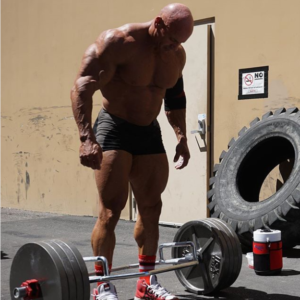 So, going back to more of a training focus, Let’s talk about your process. Everybody has their little idiosyncrasies and part of my process, just for example, before I train in my garage, I go in there, I setup all my weights for what I’m going to be doing, then I go back upstairs and I shave. Because ever since I first shaved my head, I hated the feeling of having my head itching if I’m working out. It just seems to take my focus or whatever.
So, going back to more of a training focus, Let’s talk about your process. Everybody has their little idiosyncrasies and part of my process, just for example, before I train in my garage, I go in there, I setup all my weights for what I’m going to be doing, then I go back upstairs and I shave. Because ever since I first shaved my head, I hated the feeling of having my head itching if I’m working out. It just seems to take my focus or whatever.
You’re not a big believer, necessarily in pre workouts and I know that, by the time you go in your garage gym you’ve been awake for a little bit, because you wake up and go do ten minute walks. Tell me what your process is, when you are walking into your home gym to train as opposed to when you into the commercial gym to train. Tell me how you flip the switch on to be like, “Okay, now I have time to put in some work”.
You know, the reason I don’t believe in preworkouts is many fold, but first and foremost it’s because you’re compensating for a deficiency. I like to be prepared. That’s why my nutrition is so important to me, and my sleep is so important to me. I don’t need a preworkout, because I have plenty of endurance and stamina and strength to power through a great workout. I’m constantly paying attention to the nutrition and the sleep and recovery. That’s one of the major reasons. Of course, secondary to that is your body is homeostatic, so every action has an equal and opposite reaction. When you take a preworkout, your body’s response is cortisol and adrenaline and it stimulates hormones that aren’t very productive for you and for the workout. Particularly after the workout.
What I make sure I do is that no matter when I’m training, I make sure that I’ve eaten my meals, which I consistently do anyhow. Whether they’re prepped or I’m traveling. I always have the right meals. So, about two hours before training I make sure I get in a meal that has a protein that’s easily digestible. For me, it’s usually a steak or a bison burger and my rice, my monster mash. So now I know I’ve got plenty of glycogen. I’ve got plenty of protein in my system. I don’t need to augment that with anything before I train.
Sodium is the big key. I make sure and salt my foods very generously to taste all throughout all of my meals. Then when I get in to train, I’m very well hydrated and have the minerals necessary so my stamina and endurance ans strength is improved.
I have no problem turning the switch on once I get in there. I’m not tired, I don’t hit walls 20 minutes into a workout. I warm up much slower than I used to and, to me, a warm up is basically putting a little bead of sweat on by swinging my arms and moving around. Depending on the weather, wearing some sweats or a hoodie. I’ll do the exercise that I’m actually going to be using. I might do it with a band or really light weights, and just start gradually working up until I hit my heavy sets.
I try not to pre-exhaust myself with a whole bunch of warm up routines such that I’m already tired when I start to train. Because I’m only going to be in there for 40 minutes. Sometimes only 30 minutes. Maybe leg day takes an hour, just because I want to warm up a little longer, but that’s about it. It doesn’t take me much, I think, to get ready or to do my training as long as I’m warm and healthy. I do use a lot of bands because it really helps my joints at my age, even though I’ve rehabbed them and they’re very healthy, I want to keep them that way.
You have, what I guess I’d call a Jeet Kune Do approach. Where you discard what is useless and I heard another quote like that it’s, “If it’s important, do it now. If it’s not important, don’t do it at all”. It seems like a pretty accurate description of your approach to training styles, recovery, and your nutritional approach. How did you develop your ability to hone in on what’s important and cutout the fluff?
You know that’s years of training and finally just discovering that at some point you only what to do what works, and I don’t believe in reps and sets for the sake of reps and sets, you know? All of that, it’s just repetitive strain on the body and the joints without any real return on your investments. So I do try and focus on the kinds of exercises that give me a significant return, the multi-joint movements, the … definitely if it’s for hypertrophy, the range of motion. Most important to me is that … the only reason to go to the gym, and this is a direct quote out of Eddie Coan’s book as well, is to improve. It’s to get results. I’m not in there exercising. I’m in there training, and there’s a difference between the two, as you well know. Training is focus on getting your results. That has to be measured in terms of either progressive resistance, just whatever goal you’ve set, and progressing to get there. It has to be some improvement each workout.
If I’m not improving each workout, then I’ve done something wrong in any number of ways. Either I didn’t train efficiently, or I didn’t eat correctly, or I didn’t sleep enough. So, I’m focused on all those things, all the time.
You had a pretty enlightening conversation with Ben Pakulski, in there he mentioned that he thinks that external motivation isn’t dependable. So many people I talk to say that the reason they can’t train at home, is they feed off of the energy of other gym member. That’s how they have a quality workout. In my mind, that just leaves you at the mercy of other people, so now, you have to schedule your PR attempts for a day when they are not stuck in traffic or home with a sick kid.
You sort of already answered as far as your general workout, but do you save your PR attempts, if you do a heavier weight or anything, if you save that for when you’re around other people, or are you fine to go ahead and hit a weight … let’s say you’re going to do, you are used to doing 20 reps in a squat, today you decide you’re going to do 30. Is that something you would save for when you are at the gym or are you fine and comfortable doing it at home?
You know, generally speaking, I’ve said in my rant, the reason why Westside athletes are so strong is that they train with a great coach and a great environment. That’s why I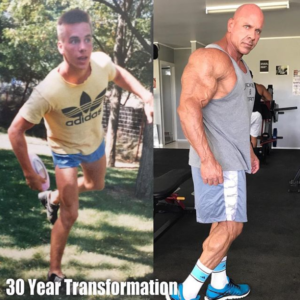 went to Flex Wheeler. I packed my bags and moved down there for two months to train with him every day. Because I knew he would expect and could get more out of me than I might be able to draw out of myself. I was able to turn my brain off and just go as hard as I possibly could.
went to Flex Wheeler. I packed my bags and moved down there for two months to train with him every day. Because I knew he would expect and could get more out of me than I might be able to draw out of myself. I was able to turn my brain off and just go as hard as I possibly could.
Same thing with Mark Bell, when I went down and trained with his team. I made more progress there as a result. I do think it’s important to have good competition, because then it pushes you to try a little more. If you are going head-to-head, I always … historically in bodybuilding, trained with Keith Williams. In the past, I’ve trained with many of the greatest powerlifters in the world, with Dan Green and Eric Lillebridge and many many others.
We would push each other. I think it helps you to understand you have more in you, that can be drawn out of you that you might not be able to pull out of yourself. Although, there’s some great lifters who train by themselves. I’ve always found that with competition and in competition, I tend to perform better. Of course now-a-days we have Instagram. A lot of the same type of increased effort is drawn out of just turning the camera on and knowing that that’s going to be your weekly post.
I’m not opposed to it, for that reason. So long as it maximizes efforts and provides people a pathway to push themselves harder and make more progress. I guess it’s up to the individual, but I’ve always found that, if you are the biggest guy in the gym, get a new gym. If you’re the strongest, then find another guy to train with.
You talked in that same interview about the power of posing. I was reading as far back 1911, Strongman Maxick wrote that he made his first muscle gains by posing in his room at night, when his parents were in bed; because they were afraid he was going to hurt himself if he lifted weights. So, he started to put on muscle, essentially by posing.
How soon after someone begins training would you recommend they incorporate posing as part of their routing? Whether they’re going to compete in body building or not? Do think that there are benefits from just posing?
Absolutely! I was posing back in the Eighties. We used to run video cameras and watch ourselves to improve our posing. Back when it mattered, when it was actually scored in bodybuilding. I think a lot of that contributed to the improvements to my physique at the time. It fell off over the years, because it was no longer scored for, but you can remember, Robby Robinson is a huge proponent. Then, of course, Arnold Schwarzenegger, huge proponents of posing after workouts. Talked at lengths about after arm workout how he would flex his arms for sometimes 20 minutes. Getting that volume that’s pumped in there. We know that a lot of that pump triggers the hormones that might then lead to hypertrophy.
I think it’s huge. Flex, of course was a huge proponent of it and we used to pose every single night after training. We’d pose after every workout and have a separate posing session at night. At least 30 to 40 days before a show. It’s not just important for the conditioning and your ability to hold those poses on stage, but I think it contributes to the hypertrophy process and stimulates the right hormones for growth. I think it’s hugely important.
Well, Stan, I really appreciate your time. You probably don’t remember, but the first time I actually met you, you had just squatted in the Animal Cage, then we went to the Animal Barbell Club that night, you were standing there and you had the biggest smile on your face watching us train.
Like I said, I know you don’t remember me, but when I do talk to you, you act like we’re old friends. That’s great for my ego. It makes me look good in front of my wife. Stan, it is truly an honor to be able to actually talk to you and you are always so gracious every time I talk to you.
Well, thanks a lot man. And you hit the nail on the head. I enjoy this. If you have to find motivation from somewhere to do this, then maybe this isn’t for you. This is something that I’ve always loved to do. I’m passionate about it and I’m excited for everyone who gets involved and finds the same joy from training. I think we are all brothers in iron, whether it’s CrossFit, or power lifting, or strongman, or bodybuilding, or anybody who picks up a barbell or a dumbbell. I see that same feeling in me, it’s euphoric. I’m glad that that’s what you notice is that I just enjoy it so much.
You can find Stan at any of the following links:
- Website- https://thekooler.com/
- Facebook – https://www.facebook.com/thekoolercom
- Youtube – https://www.youtube.com/user/stanefferding
- Twitter – https://twitter.com/StanEfferding
- Instagram – https://www.instagram.com/stanefferding

